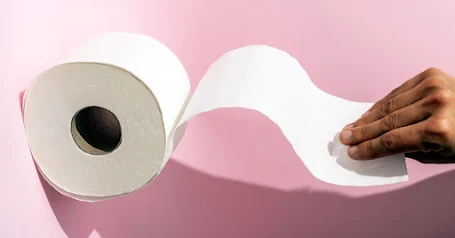Why Your White Toilet Paper is Toxic – The Real Truth That Nobody Talks About
Why Your White Toilet Paper is Toxic
Have you ever wondered how toilet paper gets to be so white? Shouldn’t it be brown if it’s made from wood? Unfortunately, paper industries use chlorine and chlorine dioxide to bleach it. This process creates cancer-causing chemicals such as dioxins and furans, which are in the air and pretty much everywhere else. Low levels of exposure have been linked to many health problems such as cancer, hormone imbalances (dioxin is a hormone disruptor), immune system impairments, reduced fertility, and birth defects. Dioxins cannot be excreted by our bodies, so they just accumulate over time creating a very dangerous situation. Many studies have found correlations between high workplace exposure to dioxins and an increased risk of cancer. If you make your coffee using conventional paper filters, 40-70% of the filter's dioxins can leach into your coffee.
What’s worse, bleached paper is believed to be the most carcinogenic chemical known to science! The Toilet Paper Encyclopedia explains, “Many pulp and paper mills use chlorine-based chemicals to bleach pulp white. These chemicals react with organic molecules in the wood and other fibers to create many toxic byproducts, including dioxin. Chlorinated toilet paper contains the highest amount of furans out of all cosmetic tissues… Dioxin, a bleaching byproduct, is one of the most toxic human-made chemicals. Once released into the environment, it is persistent because natural bacteria cannot effectively break it down. ‘Dioxin’ is often used as a catchall term for three acutely toxic chemical groups: true dioxins, furans, and polychlorinated biphenyls (PCBs).”
Other Chemicals in Toilet Paper
If you use conventionally manufactured toilet paper, you are wiping these toxic chemicals onto your body.
Bisphenol A (BPA):
In this 2012study on BPA, it was discovered that “the concentrations [of BPA] are very high in paper products.” This includes recycled toilet paper.
Formaldehyde:
According to a study, formaldehyde is used “to improve the wet-strength and other “valued” characteristics of paper and paper products”. The National Toxicology Program has classified formaldehyde as a known carcinogen.
Chemical Free Toilet Paper Brands
Here are a few safer options when it comes to toilet paper:
Unbleached: Completely natural – no bleach added. May not be a winner on softness or comfort.
Processed Chlorine Free (PCF): Recycled paper bleached with oxygen, ozone, or hydrogen peroxide. Examples of brands with PCF toilet paper: are Seventh Generation, Green Forest, Planet, 365 Whole Foods, and Earth First.
Totally Chlorine Free (TCF): Non-recycled paper bleached with oxygen, ozone, or hydrogen.








.jpg)





Thank you so much for information on all of these things
but one ends up in lots of confusion the other informs this and the other is criticising the information so you end up nt knowing which one to follow its so disturbing you can't contain it all